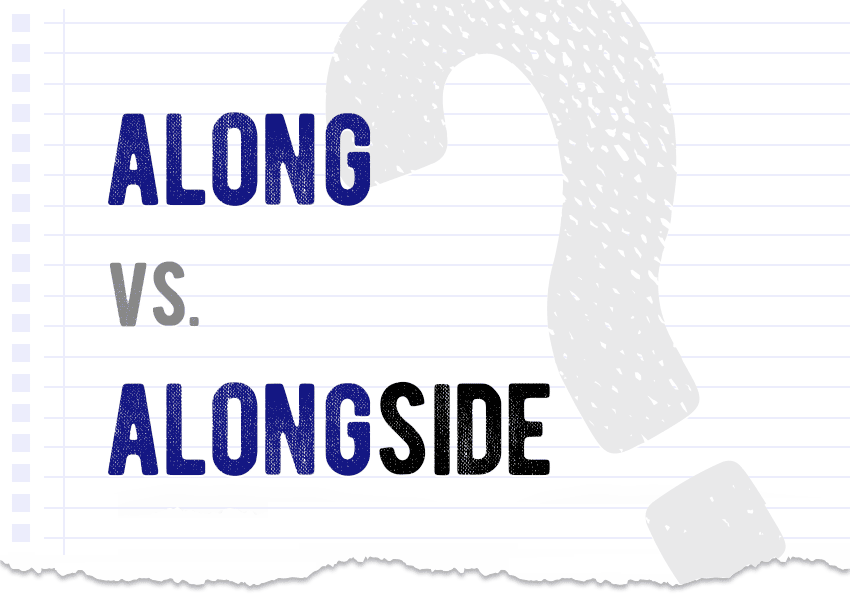Along vs. alongside – is there a difference?
Contrary to what some may think when looking at along vs. alongside, these words are not interchangeable. How are they similar and how are they different? See below for a brief explanation, definitions and examples.

Along vs. alongside – similarities
The two words are not only connected, but one comes from the other – alongside derives from along. The fact that you can see the word long in both is also no coincidence.
How is along different from alongside?
In its most basic sense, the word along means ‘lengthwise’. More specifically, it’s used to refer to something that stretches throughout or happens in line with the length of something. For example, buildings are usually built along the street, you can walk along a river, etc.
The word alongside is short for ‘along the side’. The focus here is on situations when two things are side by side, next to or close to each other (these three expressions can be used as synonyms of alongside). For example, you can park alongside someone else’s car so that the two cars are parallel to each other.
Along vs. alongside. Other meanings
Both words have become part of numerous idioms, phrasal verbs and have many collocations, so make sure to look up the specific word combination if the more basic meaning is not enough. Otherwise, look at what the words consist of, think of their synonyms, and imagine the relationship between the things or people in the situation.
Along vs. alongside – now it’s all clear! Examples from press
He bit the end and spat and rolled the cigar along his tongue and gripped it in his teeth and reached for a match.
New York Times, Oct 14, 2022
But for one weekend in September, the pine forest along the riverbank was alive with dancers.
New York Times, Oct 20, 2022
The parade, which begins at 7 p.m. on Sixth Avenue between Spring Street and 16th Street, encourages thousands of costumed New Yorkers to walk alongside the performers.
New York Times, Oct 6, 2022


